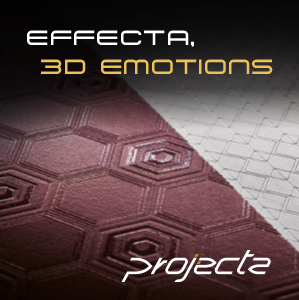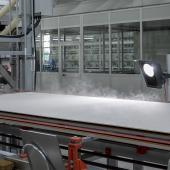Ceramic tile costs and revenues in 2001
According to Assopiastrelle, the entire 2001 production amounted to 638.4 million square metres, up on the 631.8 million square metres of 2000. In 2001, glazed porcelain tile accounted for 25.23% of production (161,094,000 sq.m) compared to 19.81% the year before; unglazed porcelain tile reached 23.11% (compared to 22.69% the year before), equivalent to 147,575,000 sq.m. The production of red body single fired tile remains stable (78,889,000 sq.m, 12.3%), double fired tile has shown a slight fall (66,768,000 sq.m, 10.46%) and the other product types are stable (4.9%).
The average manufacturing cost of a square metre of tile in 2001 was slightly higher than in 2000: 4.77 euro instead of 4.69 (+1.76% net of inflation).
The in-depth section provides details of the variations in costs for each product type (only that of glazed porcelain tile is falling), total average cost (equal to that of 2000: 8.35 euro per square metre), and variations in sector profits.
In 2001, the manufacturing cost of a square metre of tile showed an average increase net of inflation of just 1.76% compared to the 4.68% increase in 2000. The increase in energy costs (+18%) was offset by a fall in labour costs (-2%). Out of the various cost items, the costs of body and glaze have remained unchanged (accounting for 4.3% and 22.08% of the total respectively).
As for the various product types, there was an increase in the manufacturing cost of double fired tile (4.55 euro/sq.m compared to 4.48 euro/sq.m in 2000), red body single fired tile (3.67 compared to 3.65), white body single fired tile (4.52 compared to 4.50) and unglazed porcelain tile (5.42 compared to 5.36). Only unglazed porcelain tile has shown a fall: the manufacturing cost of a square metre was 5.16 euro compared to 5.21.
In 2001, the factors contributing to the manufacturing cost of Italian tiles were firstly raw materials (35%), followed by energy (24%), labour (27%) and other costs (14%).
According to Assopiastrelle, the total average cost of ceramic tiles was 8.35 euro per square metre, on a par with that of 2000. The total average cost of each tile is the sum of the manufacturing costs and the commercial and administrative costs. In 2001, commercial costs - consisting of commission, marketing and advertising, trade fairs and sales staff - amounted to 1.70 euro per square metre compared to 1.76 euro/sq. metre a year before.
Administrative costs (charges, amortisation, general expenditure, etc.) amount to 1.88 euro per square metre (compared to 1.90 in 2000). Manufacturing costs account for 57.19% of the total, commercial costs 20.31% and administrative costs 22.50%.
What are the ceramic manufacturers' profit margins? According to the Assopiastrelle survey, average pre-tax profits fell from 0.23 to 0.17 euro per square metre in 2001, a drop of 0.06 euro (-25.6%). The sector as a whole continues to display extremely small profit margins.
According to Assopiastrelle, this negative result is essentially due to the fall in average revenues, down to 8.52 euro/square metre from 8.58 in 2000 (-0.06%). The prospects for 2002 appear to be even worse. According to the report, "The indicators available for 2002 do not show significant variations in the main cost items, so the year could have average pre-tax profits very close to zero if not negative."
Did you find this article useful?
Join the CWW community to receive the most important news from the global ceramic industry every two weeks
Recent articles
System Ceramics’ Full Digital revolution
Jun 19, 2025
Three-dimensional surfaces: BVERSO, More Is Less
Jun 19, 2025
Vesco Group reports 89% revenue growth in 2024
Jun 18, 2025





















